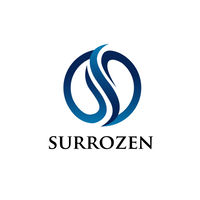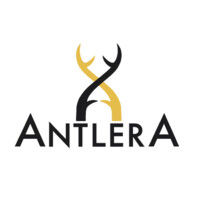预约演示
更新于:2025-05-07
LRP6
更新于:2025-05-07
基本信息
别名 ADCAD2、LDL receptor related protein 6、Low-density lipoprotein receptor-related protein 6 + [2] |
简介 Component of the Wnt-Fzd-LRP5-LRP6 complex that triggers beta-catenin signaling through inducing aggregation of receptor-ligand complexes into ribosome-sized signalosomes. Cell-surface coreceptor of Wnt/beta-catenin signaling, which plays a pivotal role in bone formation. The Wnt-induced Fzd/LRP6 coreceptor complex recruits DVL1 polymers to the plasma membrane which, in turn, recruits the AXIN1/GSK3B-complex to the cell surface promoting the formation of signalosomes and inhibiting AXIN1/GSK3-mediated phosphorylation and destruction of beta-catenin. Required for posterior patterning of the epiblast during gastrulation (By similarity). |
关联
8
项与 LRP6 相关的药物作用机制 FZD5抑制剂 [+2] |
在研机构 |
原研机构 |
在研适应症 |
非在研适应症- |
最高研发阶段临床1期 |
首次获批国家/地区- |
首次获批日期1800-01-20 |
作用机制 FZD4激动剂 [+1] |
非在研适应症- |
最高研发阶段临床前 |
首次获批国家/地区- |
首次获批日期1800-01-20 |
靶点 |
作用机制 LRP6抑制剂 |
在研机构 |
原研机构 |
在研适应症 |
非在研适应症- |
最高研发阶段临床前 |
首次获批国家/地区- |
首次获批日期1800-01-20 |
3
项与 LRP6 相关的临床试验ACTRN12622000344796
A Phase 1/1b, Three-Part, Randomised, Placebo-Controlled, Single- and Multiple-Ascending-Dose Studyto Evaluate the Safety, Pharmacokinetics, and Activity of SZN-1326 in Healthy Volunteers and in Subjects with Moderate to Severe Ulcerative Colitis
开始日期2022-05-09 |
申办/合作机构 |
NL-OMON49457
An open label Phase I Positron Emission Tomography Imaging study to investigate the bio-distribution and tumor uptake of [89Zr]Zr-BI 905677 in patients with advanced tumors harbouring an RNF43 mutation or R-Spondin Fusion - A study how BI 905677 acts in tumors of patients with cancer
开始日期2020-07-27 |
申办/合作机构 |
NCT03604445
An Open-label, Phase I Trial to Determine the Maximum-tolerated Dose and Investigate Safety, Pharmacokinetics and Efficacy of BI 905677 Administered Intravenously in Patients With Advanced Solid Tumours
This study is open to adults with different types of advanced cancer (solid tumours). This study is open to people in whom previous treatments were not successful. The purpose of this study is to find out the highest dose of BI 905677 the participants can tolerate. BI 905677 is a type of an antibody that is being developed to treat cancer.
One dose of BI 905677 is given to the participants every 2 or 3 weeks as infusion into a vein. In this study, BI 905677 is given to humans for the first time. The participants visit the study site at least once a week so that the doctors can check their general health. The participants are in the study for as long as they benefit from and can tolerate treatment.
One dose of BI 905677 is given to the participants every 2 or 3 weeks as infusion into a vein. In this study, BI 905677 is given to humans for the first time. The participants visit the study site at least once a week so that the doctors can check their general health. The participants are in the study for as long as they benefit from and can tolerate treatment.
开始日期2018-08-08 |
申办/合作机构 |
100 项与 LRP6 相关的临床结果
登录后查看更多信息
100 项与 LRP6 相关的转化医学
登录后查看更多信息
0 项与 LRP6 相关的专利(医药)
登录后查看更多信息
1,308
项与 LRP6 相关的文献(医药)2025-07-01·Cellular Signalling
Blocking the Dkk1-LRP6 interaction prevents acute amyloid-β-driven cognitive impairment
Article
作者: Harte, Michael ; Ghosh, Anshua ; Baillie, George S ; Aarsland, Dag ; Killick, Richard ; Jackson, Joshua ; Ribe, Elena ; Ulmschneider, Martin ; Ballard, Clive ; Elliott, Christina ; Khan, Ayesha ; Findlay, Jane ; Williams, Gareth
2025-04-15·The FASEB Journal
Article
作者: Sun, Le ; Jia, Xianxian ; Xu, Wei ; Yang, Miao ; Wang, Yingjie
2025-04-01·Molecular and Cellular Biochemistry
MicroRNA-205-5p inhibits the growth and migration of breast cancer through targeting Wnt/β-catenin co-receptor LRP6 and interacting with lncRNAs
Review
作者: Abdel-Hamed, Asmaa R ; Kamal, Mohamed M. ; Mesbah, Noha M ; Reda, Ahmed M. ; Mohamed, Sameh H ; Reda, Ahmed M ; Mohamed, Sameh H. ; Kamal, Mohamed M ; Abo-Elmatty, Dina M. ; Mesbah, Noha M. ; Abo-Elmatty, Dina M ; Abdel-Hamed, Asmaa R.
14
项与 LRP6 相关的新闻(医药)2024-10-16
摘要:双特异性抗体(bpAbs)能够结合抗原上不同且不重叠的表位。这种独特的结合模式使得bpAbs除了单特异性抗体和双特异性抗体(bsAbs)之外,还能发挥新的机制作用,使其成为多种适应症(包括肿瘤学和传染病)的有效治疗手段。双特异性结合可以带来更高的亲和力和特异性,促进拮抗作用,锁定目标构象,并导致高阶目标聚集。这些抗体-目标复合物可以引发强烈的激动作用,增强免疫效应功能,或导致目标快速下调调节和溶酶体转运。这些特性不仅对治疗性抗体具有吸引力,而且越来越多地被探索用于其他模式,如抗体-药物偶联物、T细胞接合器和嵌合抗原受体。近期在bpAb工程上的进展已经使得构建越来越复杂的格式成为可能,这些格式开始在临床上显示出希望。
1.引言
在2022年美国新批准的药物中,抗体疗法占了30%。在开发中的抗体中,观察到高度工程化分子的数量显著增加,包括双特异性抗体(bsAbs)。双特异性抗体(bpAbs)是bsAbs的一个子集,对同一分子靶标的特有、不重叠的表位具有特异性。这种独特的结合模式建立于30多年前,能够实现差异化的作用机制(MoAs)。在过去十年中,随着临床试验中首次取得成功,bpAbs的治疗潜力已变得明显。这些开创性的分子为当今临床开发中越来越多的bpAbs铺平了道路(表1)。本综述提供了bpAbs的不同格式和MoAs、当前的临床管线和前景的概述。
2.双特异性格式
在抗体发现和工程方面的进展使得组装针对不同表位的结合域的bpAb格式越来越复杂,这些格式采用不同的架构。格式的选择取决于目标生物学和提议的MoA。关键的设计考虑因素包括目标表位、单个结合域的数量和性质、半衰期延长和效应功能介导域的添加,以及确保所有域正确组装成功能性bpAb的策略。后者可以简单到将单个域与灵活的链接器串联在一个单一蛋白中,或者在含有结晶片段(Fc)域的bpAbs中,取决于多达四个不同蛋白与相应的引导突变在重链(HCs)和轻链(LCs)中的配对。预测有效的表位对是困难的,无论是通过理性设计还是通过抗体混合物。因此,能够高效地生成和筛选给定bpAb格式中的大量表位对矩阵是关键。除了功能性和可行性之外,在选择bpAb格式时,开发性考虑至关重要。早期对bpAbs的生物物理责任进行测试可以减少动物研究和临床试验中失败的风险。同样,bpAb格式的选择可能影响下游制造和质量控制,因为bpAb格式复杂性可能导致不良的开发性或由于bpAb格式复杂性导致的错配副产品。
迄今为止在临床上测试的bpAbs不仅具有多样的格式,而且还涉及大量单个结合域(图1)。单链抗体格式,如单域抗体(sdAbs)和单链可变片段(scFvs)特别容易在双特异性格式中配对。因此,首批进入临床的两种bpAbs,ALX-0651和BI 1034020,由串联的sdAbs组成。基于抗体片段的bpAbs通常在循环中的半衰期较短,需要进一步工程化以提高暴露量。小尺寸使sdAbs成为嵌合抗原受体(CARs)的理想构建块,如双特异性CAR-T疗法ciltacabtagene autoleucel(cilta-cel)和OriCAR-017所突出的。
迄今为止在临床上测试的大多数bpAbs具有更规范的、含有Fc的架构,可以根据HC轴的对称性进行分类(图1)。对称bpAbs由相同的HC或HC/LC对组成,而不对称分子由具有不同结合域的不同半部分组成。四价分子MEDI4276和BAT2022是对称bpAbs的例子。
图1. 在临床试验中评估的双特异性抗体结构。条纹域代表常见的轻链VL或IgG4 Fc。REGN5093-M114每个抗体平均含有3.2个非特异性结合的药物。MBS301不包含增强六聚体化的突变;*药物与抗体的比例和结合位点与所示示例不同。
对称型双特异性抗体(bpAbs)由相同的重链(HC)或重链/轻链(HC/LC)对组成,而不对称型分子则由不同的两半组成,具有不同的结合域。四价分子MEDI4276和BAT2022是对称型bpAbs的例子,具有2+2的价数(每个整数描述分子中存在的相同亲和位点的数量),并且单链可变区片段(scFv)或单域抗体(sdAb)分别附加在HC的N端或C端。
另一方面,KN060是一个对称型双特异性抗体,具有串联的sdAb臂,没有轻链。类似于KN060,三特异性抗体TAVO412通过串联的sdAb臂实现双亲和位点靶向,该臂嵌入在更复杂的不对称格式中。
不对称型双特异性抗体通常依赖于Fc突变,以促进双特异性抗体产品的纯化或指导异二聚体形成。例如,REGN5093的两个HC被设计成对蛋白A具有不同的亲和力,允许纯化异二聚体产品。
另一方面,GEN3009是一个不对称型双特异性抗体,具有Fc域导向突变,确保两个不同的HC正确配对。除了HC异二聚体外,正确的LC配对对不对称型双特异性抗体来说可能是一个挑战。在GEN3009的例子中,通过两个亲本抗体的温和体外反应实现正确的配对,允许HC重组而不打乱原始的LC配对。REGN5093展示了一种避免LC配对问题的整体策略,它由两个不同的HC与两个相同的LC配对组成。这些共同的LC可以直接从具有定义的LC多样性的发现平台中获得,如REGN5093的例子,或者从现有的LC中工程化,如anbenitamab和GR2002。
ISB 1442和SAR441236是不对称型双特异性抗体的例子,它们通过增加Fab或scFv结构域扩展了免疫球蛋白G(IgG)结构,分别实现更高的价数,甚至在SAR441236的情况下实现三亲和位点结合。较小的不对称格式,如基于片段-Fab的zanidatamab或基于片段的TNB-738也可以被利用。Zanidatamab将scFv结构域与完整的Fab臂配对,而TNB-738从两个sdAb中衍生出其结合臂,并添加了一个惰性的LC以便于制造。除了免疫球蛋白折叠,双亲和位点设计的ankyrin重复蛋白(DARPin),MP0274,突出了替代框架的潜力。
Labrijn等人全面回顾了所有双特异性格式。
图2. 双特异性抗体的作用机制。(a) 双特异性抗体在顺式或反式中的强靶标结合的示意图。双特异性抗体可以解锁新的生物学活性,例如 (b) 双通路抑制,(c) 锁定外域在酶学上不活跃的状态,或 (d) 双特异性受体靶向以形成更高阶的复合物并引发激动作用。 (e) 另外,双特异性抗体在反式中的结合可以导致受体和Fc结构域聚集,从而快速内化和溶酶体运输或强烈的效应功能,特别是补体依赖的细胞毒性。
3.双特异性抗体的作用机制
3.1.双亲和位点靶向通过亲和力增强结合
与同一目标上的两个不同、不重叠的表位结合,导致双特异性抗体与其它抗体相比具有独特的属性。许多双特异性抗体显示出比它们的单亲和位点亲本抗体更强的结合力和更慢的解离速度。这是由于对同一(顺式)或不同(反式)目标分子上的两个不同表位的亲和力结合。亲和力定义为单个分子通过多个非共价相互作用的组合以及一旦建立了第一次相互作用,结合和重新结合事件的可能性增加。
针对不同表位的抗体片段可以通过亲和力链接来增加目标亲和力,如基于sdAb的、临床评估的双特异性抗体ALX-0651和BI 1034020所强调的。与单价或双价单克隆抗体(mAbs)相比,双特异性抗体的解离可以显著更慢,使它们成为优越的拮抗剂、反向激动剂或反向拮抗剂。顺式结合形成1:1的双特异性抗体目标复合物对于这些应用来说可能很重要,以避免不需要的激动剂活性。
除了表位选择,结合域的几何排列、sdAb连接优化和亲和力调节对于实现期望的作用机制(MoA)和最大化效果至关重要。Kast及其同事证明,结合域的几何形状对于人表皮生长因子受体2(HER2)的双特异性及四价融合蛋白的拮抗作用至关重要,某些配置显示出激动剂活性。同样,针对表皮生长因子受体(EGFR)的三价抗纤维连接蛋白融合蛋白的不同结构在受体下调中显示出不同的效果。对于基于sdAb的拮抗剂,最佳的取向和连接属性可以通过顺式结合实现超高亲和力。最后,临床双特异性抗体ISB 1442依赖于仔细调节的CD38和CD47亲和力以减少靶向毒性。ISB 1442的抗CD47 Fab已被设计为弱亲和力,以实现对CD47阳性红细胞的最小反应性。高亲和力的双特异性抗CD38臂能够在CD38低表达的肿瘤细胞上实现强烈的目标参与和高特异性。
双特异性抗体的高亲和力和缓慢解离也适合于招募免疫细胞。例如,刘及其同事通过融合两个针对不重叠表位的sdAbs与一个抗CD3 Fab,设计了一种T细胞结合抗HER2双特异性抗体。得到的构建物在HER2阳性细胞上的结合比相应的单特异性亲本分子增加了30倍,并在体内HER2低表达模型中显示出优越的肿瘤抑制活性。同样,Rennert等人设计了一种针对C型凝集素结构域家族12成员A(CLEC12A)的双特异性桥接蛋白,该蛋白由其分泌并招募抗CD19 CAR-T细胞。双特异性靶向实现的高亲和力导致增强的抗CD19 CAR-T细胞毒性。由于sdAbs的小尺寸,CAR可以直接配备双特异性抗体,如cilta-cel和OriCAR-017所示。这些CAR的高亲和力双特异性结合可以实现增强和持久的效果。如上所述,对于基于sdAb的拮抗剂,仔细选择表位和连接优化可能是关键。3.2.双特异性抗体能够实现双途径抑制,并且可以锁定受体和外酶的构象
结合两个不重叠的表位可以为双特异性抗体(bpAbs)解锁独特的活性。例如,通过针对低密度脂蛋白受体相关蛋白6(LRP6)的双特异性抗体实现了双通路抑制,同时阻断Wnt1和Wnt3a介导的β-连环蛋白信号通路,显著地没有激动剂活性。
或者,双特异性抗体可以通过物理限制其靶标来使其失活。针对HER2的双特异性DARPin的晶体结构揭示了结合和扭曲两个HER2受体,阻止了与EGFR家族成员形成具有信号能力的二聚体。
此外,针对CD38和CD73的双特异性抗体,包括临床双特异性抗体TNB-738,被证明通过将各自的细胞外结构域锁定在催化非活性状态来作为酶抑制剂。
尽管单独的亲本抗体没有显示出任何活性,但针对CD73的双特异性抗体具有亚纳摩尔级的活性,并实现了超过90%的抑制。
双特异性抗体可以形成免疫复合物,导致激动剂活性、快速目标内化、溶酶体运输和改善的免疫效应功能。
双特异性抗体的一个独特特性是它们能够通过同时在反式中结合两个不重叠的表位来形成高阶免疫复合物。目标交联是多种作用机制的基础,包括增强的激动剂活性、Fc介导的效应功能或清除可溶性目标以及受体下调。
双特异性抗体的聚集可以促进激动剂活性,特别是对于依赖交联以实现有效下游信号传导的受体。
双特异性抗体也可能独特地激活多组分受体复合物。例如,Shi等人设计了一种针对β-klotho的两个不同表位的双特异性抗体,β-klotho是成纤维细胞生长因子受体1c(FGFR1c)的共受体。
双特异性靶向既必要又足以引发强大的激动剂活性。双特异性抗体通过双特异性抗体增加Fc结构域的局部浓度,从而可以改善效应功能。
这种效应已在被单克隆抗体靶向的多价复合物中观察到,例如被治疗性单克隆抗体利妥昔单抗靶向的B细胞标记CD20。
双特异性抗体的结合可以扩展这种机制到更多的目标。例如,zanidatamab形成的大HER2聚集被证明比亲本单克隆抗体的组合导致更强的补体依赖性细胞毒性(CDC),这是由于Fc结构域的预组织和C1q沉积的增加。
这种效应在引入六聚体增强点突变的Fc结构域的针对CD37的双特异性抗体GEN3009中进一步放大。
尽管Fc聚集的效果不那么明显,但双特异性抗体已被证明也可以通过增加与自然杀伤(NK)细胞上的FcγRIII受体的结合来改善抗体依赖性细胞介导的细胞毒性(ADCC)。
类似地,通过针对白细胞介素6(IL6)的双特异性抗体聚集,增加了Fcγ受体在吞噬细胞上的结合,并促进了可溶性目标的快速清除。
交联的受体筏已被证明可以迅速内化并运输到溶酶体,导致目标的快速下调。
值得注意的是,交联效率及其相关效应可能取决于表位选择以及双特异性抗体:目标几何形状。
快速内化和溶酶体运输使双特异性抗体成为抗体药物偶联物(ADCs)中越来越受欢迎的构建模块,它们推动了肿瘤输送和细胞毒素有效载荷的细胞内释放,如MEDI4276、REGN5093-M114和zanidatamab zovodotin所示。
与单特异性药物相比,针对叶酸受体α(FRα)的双特异性ADC IMGN151显示出优越的有效载荷输送。
由于这种效应与细胞表面FRα密度无关,人们推测IMGN151增加的有效载荷输送是通过增强FRα阳性细胞上的结合事件而不是聚集,这应该随着受体密度的增加而减少。然而,这两种机制并不是相互排斥的,需要进一步的研究来阐明IMGN151的作用机制。3.3.同时结合不同的表位可以克服抗性机制
在治疗病毒感染中常见的挑战是找到一种广泛中和抗体(bnAb),它结合在衣壳蛋白的保守区域,并产生持久的反应。单价抗体可以针对保守区域,但容易受到突变逃逸的影响,因为它们对病毒施加了选择性压力。类似于小分子药物的鸡尾酒疗法,bnAbs的组合已被证明通过降低单次突变逃逸变体的机会,有效减少单药治疗的抗性。
双特异性广泛中和抗体结合了鸡尾酒疗法的临床益处和单一药物剂量使用的便利性,使它们成为开发中令人兴奋的领域。
针对严重急性呼吸综合征冠状病毒2(SARS-CoV-2)的双特异性广泛中和抗体BAT2022,被证明能够结合所有主要的关注变体,包括一个不再被一个亲本抗体识别的受体结合域(RBD)突变体。
对于HIV,三特异性广泛中和抗体SAR441236和几个临床前分子通过针对病毒衣壳蛋白上的多个表位显示出前景。
防止抗性的多价靶向对于肿瘤相关抗原(TAA)的靶向也可能是临床上有用的。肿瘤细胞可以通过选择性剪接消除靶向的表位。人们推测,双特异性CAR-T细胞可以通过同时针对两个表位来防止肿瘤逃逸。
虽然进一步的机制研究将很重要,但这对于癌症免疫疗法是一个有趣的前景。虽然概念上不同,Spangler和同事证明了针对EGFR的三特异性靶向可以恢复对西妥昔单抗耐药的异种移植模型的疗效,这些模型在下游信号通路中有突变。
最有效的三特异性构建物实现了单独使用双特异性或单特异性构建物无法实现的受体下调水平。3.4.治疗应用和模式
迄今为止,大多数双特异性抗体已开发用于肿瘤学应用,并且随着cilta-cel的批准,首个基于双特异性抗体的细胞疗法已获批用于复发和难治性多发性骨髓瘤。
许多其他双特异性抗体目前正在早期临床试验中,用于血液癌症的治疗,包括ISB 1442和OriCAR-017,它们都处于治疗复发/难治性多发性骨髓瘤的I期。
对于实体瘤的治疗,许多双特异性抗体针对HER2,HER2是一种受体酪氨酸激酶,涉及包括细胞增殖在内的多种细胞功能。在20-25%的乳腺癌患者中观察到HER2的高水平过表达。
通过结合临床单克隆抗体曲妥珠单抗和帕妥珠单抗靶向不重叠的结构域IV和II,分别针对两个不同的HER2表位,以前已被证明可以显著改善治疗结果和预后。
HER2的重要性和双表位靶向的临床先例可能解释了管线中大量的抗HER2双特异性抗体,包括anbenitamab和zanidatamab,这是两个最先进的针对HER2的双特异性抗体。
其他杰出的肿瘤学靶标也通过双特异性抗体进行追求,包括通过REGN5093(-M114)和IMGN151分别针对间充质-上皮转化因子(MET)和叶酸受体α(FRα)。
在肿瘤学之外,临床候选药物SAR441236和BAT2022突显了双特异性抗体在传染病中的潜力。阻碍广泛实施针对急性感染的bnAbs的一个挑战是逃逸变体的出现,正如最近的SARS-CoV-2大流行所说明的那样。
针对单一表位的单克隆抗体只在突变逃逸变体发展并广泛传播之前有效,这使得既定的疗法无效。针对多个表位的bnAbs,如针对SARS-CoV-2的双特异性抗体BAT2022或针对HIV的三特异性抗体SAR441236,可以克服急性和慢性疾病中单突变逃逸变体的出现,允许持续使用和更持久的患者反应。
大多数临床双特异性抗体作为裸抗体发挥作用,以治疗病毒感染,通过相应的受体抑制或促进细胞信号传导,或者如TNB-738通过抑制酶活性。越来越多地,双特异性抗体被用于作为ADCs的一部分进行有效载荷输送,因为它们独特的作用机制促进了内化和溶酶体运输,如上所述。目前有六种双特异性ADC正在临床评估中,其中三种也在作为裸双特异性抗体进行研究。此外,双特异性抗体的高亲和力和选择性使其成为工程化高效T细胞招募者和CARs的有吸引力的选择。
在本节中,我们讨论了已在临床中进行测试或正在测试的双特异性抗体的结构、作用机制和活性,这些分子的数据是可用的。3.5.ALX-0651
Ablynx的ALX-0651,一种针对CXCR4的双特异性串联单域抗体,是第一个针对GPCRs的临床使用的生物制剂,并且据我们所知,是第一个进入临床的双特异性抗体(2011年)。虽然ALX-0651的单个单域抗体构建模块显示出中性拮抗剂活性,但双特异性ALX-0651不仅显示出更高的亲和力,而且还显示出针对CXCR4的反向激动剂活性。
临床前数据表明ALX-0651在阻断CXCR4介导的病毒进入以及诱导快速干细胞动员方面是有效的。尽管临床前数据支持开发,但由于缺乏对标准护理的优越性,ALX-0651已被终止。3.6.BI 1034020
BI 1034020是由Ablynx和勃林格殷格翰开发的一种双特异性、半衰期延长的串联单域抗体。这种双特异性抗体针对大脑中淀粉样蛋白β(Aβ)的两个独立表位,旨在用于阿尔茨海默病的治疗。BI 1034020的I期研究于2013年开始,但在发生与药物相关的严重不良事件后被终止。3.7.MEDI4276
MEDI4276是由Medimmune开发的一种针对HER2的抗体药物偶联物(ADC),于2015年进入临床。MEDI4276由一种基于曲妥珠单抗scFv的四价双特异性抗体组成,该抗体靶向HER2的域IV,并在mAb 39S的重链N端融合,后者靶向域II。这种双特异性抗体向HER2过表达的肿瘤细胞输送四个位点特异性结合的tubulysin有效载荷,在那里ADC被内化并运输到溶酶体以释放细胞毒素。与曲妥珠单抗和帕妥珠单抗的组合不同,MEDI4276可以交联受体,从而实现快速内化和通过将HER2从循环重定向到溶酶体降解,有效实现细胞质输送。异种移植肿瘤模型显示,MEDI4276对HER2低表达肿瘤以及对ado-trastuzumab emtansine耐药的肿瘤都具有高效性,从而满足了高度未满足的医疗需求。在I期剂量递增研究中,MEDI4276在HER2阳性乳腺癌和胃癌中显示出临床活性,但最终由于不利的毒性概况而被终止。3.8.西他卡苯自溶
Ciltacabtagene autoleucel(cilta-cel),据我们所知,是迄今为止第一个也是唯一一个获批的基于双特异性抗体的治疗。cilta-cel最初由Legend Biotech开发为LCAR-B38M,是一种第二代自体CAR-T疗法,特点是具有两个单域抗体的双特异性外结构域,这些单域抗体针对B细胞成熟抗原(BCMA)的不同表位。双特异性靶向实现了比单特异性构建更高的亲和力结合和卓越的功效。基于CARTITUDE-1 Ib/II期研究(NCT03548207)的深度和持久反应以及可管理的安全性概况,cilta-cel在2022年获得批准。总体反应率高达97.9%,甚至高于初始I期研究(NCT03090659)观察到的87.8%。有趣的是,cilta-cel的批准仅在idecabtagene vicleucel(ide-cel)批准后的一年,ide-cel是一种具有单特异性BCMA靶向的类似CAR-T疗法。虽然应该谨慎比较各自的临床试验,但双特异性cilta-cel似乎在反应率和反应持续时间方面都优于单特异性的ide-cel。3.9.Zanidatamab和zanidatamab zovodotin
Zanidatamab(ZW25)是一种由Zymeworks专有的Azymetric Fc平台衍生的双特异性抗体,它结合了一个针对HER2域IV的scFv和识别域II的Fab臂。Zanidatamab跨细胞膜结合两个HER2分子,引起细胞膜上受体的明显重组。除了快速内化和下调外,Fc结构域的聚集引起了强烈的补体依赖性细胞毒性(CDC),这在曲妥珠单抗、帕妥珠单抗或它们的组合中是观察不到的。双特异性HER2结合在体内异种移植模型中显示出比曲妥珠单抗和帕妥珠单抗组合更优越的抗肿瘤活性。Zanidatamab在具有不同HER2表达水平的多种肿瘤患者中显示出安全性。目前正在进行多项临床试验,包括针对乳腺癌的II期试验(NCT04224272)和针对晚期胃食管腺癌的III期试验(NCT05152147)。Zanidatamab也在探索用于输送细胞毒性微管抑制剂。这种双特异性ADC,zanidatamab zovodotin(ZW49),已被证明是免疫原性细胞死亡标志物的强诱导剂,并且对一系列HER2表达水平的乳腺癌和胃癌患者衍生的异种移植模型非常活跃。目前正在进行I期临床试验(NCT03821233)。3.10.MP0274
由Molecular Partners开发的MP0274通过DARPins实现双特异性HER2靶向,DARPins是可像串珠一样串联的替代框架。四价MP0274分子包含一个分别针对HER2域I和IV的DARPin,以及两个用于延长半衰期的人类血清白蛋白结合域。像基于IgG的抗HER2双特异性抗体一样,MP0274交联HER2受体,在各种HER2阳性细胞系和小鼠模型中显示出与曲妥珠单抗和帕妥珠单抗组合相当的抗肿瘤活性。然而,MP0274可能通过稳定AKT调节的叉头转录因子FOX03a导致诱导凋亡,展现出独特的作用机制。在HER2阳性实体瘤患者的I期研究中,MP0274显示出良好的暴露和有利的安全性概况。一位先前接受过曲妥珠单抗和帕妥珠单抗治疗的转移性乳腺癌患者对MP0274显示出持续反应,确立了临床概念验证。回顾性生物标志物分析揭示,这位患者是唯一一个携带HER2阳性、PI3K野生型遗传标志的患者,且在最高剂量水平,这表明在良好的MP0274暴露下,患者选择可能导致更高的反应率。然而,由于战略原因,MP0274的进一步临床开发已被停止。3.11.Anbenitamab和JSKN003
Alphamab Oncology基于曲妥珠单抗和帕妥珠单抗设计了一种双特异性HER2靶向抗体anbenitamab(KN026)。通过组合旋钮-入-孔和静电导向突变实现了相应HCs的异二聚体Fc配对。基于HER2相互作用残基的结构阐明,设计了一种可以与曲妥珠单抗和帕妥珠单抗HC分别有效配对的通用LC。由安进公司开发的双特异性抗体anbenitamab显示出比曲妥珠单抗和帕妥珠单抗组合更强的抗肿瘤活性,这一效果在不同HER2水平的多种肿瘤细胞系中均有体现,并且在小鼠模型中活性相当。初步特性分析表明,anbenitamab保留了其亲本单克隆抗体的抗体依赖性细胞介导的细胞毒性(ADCC)和抗体依赖性细胞吞噬作用(ADCP),同时能够同时结合HER2的两个不同表位。anbenitamab于2018年进入临床试验,并在至少接受过一线治疗(包括曲妥珠单抗)的晚期转移性乳腺癌患者中显示出良好的安全性。
在第二项临床试验中,anbenitamab在HER2表达的晚期胃癌和胃食管结合部癌患者中表现出良好的耐受性。基于初步的积极活性,anbenitamab目前正在进行多项临床试验的评估,包括两项注册研究:作为HER2阳性晚期或转移性胃癌的二线治疗(NCT05427383),以及作为HER2阳性复发或转移性乳腺癌的一线治疗(NCT05838066),两者均与化疗联合使用。将anbenitamab与拓扑异构酶I抑制剂结合,得到了双特异性抗HER2抗体药物偶联物JSKN003,目前正在进行首次人体I期研究,针对晚期实体瘤(NCT05494918)。
3.12.额外的HER2靶向bpAbs
此外,MBS301、BCD-147、TQB2930和KM257是基于曲妥珠单抗和帕妥珠单抗的四种额外的临床阶段抗HER2双特异性抗体。MBS301结合了曲妥珠单抗和帕妥珠单抗的去岩藻糖化半抗体,它们在工程CHO细胞系中分别生产,并通过体外使用结-洞突变异二聚体化。从Fc结构域中去除岩藻糖可以增强ADCC活性,结合双特异性靶向,可在不同HER2水平的肿瘤细胞系中以及在小鼠模型中产生强大的活性。目前正在进行一项I期临床研究(NCT03842085),评估MBS301用于治疗HER2阳性复发或转移性恶性实体瘤的效果。Biocad的BCD-147采用了一种不对称scFv-Fab格式,并已在健康志愿者中进行了I期研究(NCT03912441)。结构相似的TQB2930由泰国天晴药业开发,正在研究用于HER2阳性实体瘤的裸抗体(NCT05380882)以及作为抗体药物偶联物(TQB2102)在HER2阳性乳腺癌(NCT06115902)和胃癌中的应用。最后,轩竹生物制药正在开发不对称的通用LC双特异性抗体KM257,目前正在临床研究中,用于HER2阳性实体瘤(NCT05320874)以及作为抗体药物偶联物(KM501)在HER2阳性晚期实体瘤(NCT05804864)中的应用。
3.13.SAR441236
针对HIV的有效广谱中和抗体(bnAbs)的识别和开发由于病毒的高遗传多样性而面临挑战。大型和小分子单一疗法在很大程度上失败了,因为选择性压力增加了突变逃逸变体的机会。使用bnAbs组合的临床前和临床研究表明,靶向多个表位可以提高疗效。
SAR441236,由赛诺菲公司进行的I期临床开发(NCT03705169),由具有双重特异性的交叉双变量Ig样(CODV-Ig)臂与具有第三独特特异性的Fab臂配对,使其成为一种三特异性广谱中和抗体。临床前体内数据表明,三特异性广谱中和抗体在减少病毒载量和预防非人灵长类动物(NHP)类似的人类免疫缺陷病毒(SHIV)病毒挑战模型中的感染方面更为有效。3.14.GEN3009
Genmab结合其专有的DuoBody和HexaBody技术,设计了GEN3009,这是一种针对CD37的双特异性抗体,具有增强的Fc介导的六聚体化。这种双特异性抗体包含互补的Fc突变,这些突变引导体外控制的Fab臂交换反应中的异二聚体化,并通过E430G突变增强六聚体化。由于双表位靶向加上增强的六聚体化导致的Fc结构域密度的局部增加,与单一亲本单克隆抗体或组合相比,在B细胞淋巴瘤细胞系以及患者来源的慢性淋巴细胞白血病样本中均显示出优越的补体依赖性细胞毒性(CDC)。Fc结构域聚集进一步增加了ADCC和ADCP,导致在几种细胞系衍生的异种移植模型以及患者来源的非霍奇金淋巴瘤异种移植中产生强大的抗肿瘤活性。GEN3009已在复发或难治性B细胞非霍奇金淋巴瘤患者中进行了首次人体试验(NCT04358458),但由于战略原因,最近停止了进一步的临床开发。3.15.REGN5093和REGN5093-M114
Regeneron的双特异性抗MET常见轻链抗体,REGN5093,作为抗体(NCT04077099)和作为抗体药物偶联物(NCT04982224)已进入临床。源自Regeneron专有的VelocImmune平台,REGN5093有效地抑制了配体独立的MET和HGF诱导的信号传导。DaSilva等人表明,REGN5093创造了具有2:2化学计量比的抗体-受体复合物,与单特异性抗体形成1:2复合物形成对比。这些更大的复合物可能导致REGN5093所见的MET降解,这是由于回收效率降低和bpAb:受体复合物的溶酶体流量增加所致。Regeneron进一步利用REGN5093的这一特性,通过在其上结合专有的细胞毒素美登素载荷来开发REGN5093-M114。该分子在MET依赖性和MET非依赖性肿瘤模型中均显示出疗效,进一步证明了双特异性抗体药物偶联物方法的效用。3.16.OriCAR-017
Oricell的双特异性GPRC5D靶向CAR-T细胞疗法,OriCAR-017,已进入临床,用于治疗复发和难治性多发性骨髓瘤(NCT05016778)。类似于cilta-cel,OriCAR-017 CAR包含串联的单域抗体,靶向GPRC5D上的两个不同表位。作者推测,双特异性靶向增加了他们的CAR-T细胞疗法的特异性和亲和力,从而提高了疗效。报告了有利的I期安全性和有效性数据,并支持OriCAR-017的进一步开发。3.17.SARS-CoV-2 中和双特异性抗体(bpAbs)
MABS由SARS-CoV-2引起的全球大流行促使全球范围内的大量研究工作,多个研究小组展示了使用单域抗体(sdAbs)等抗体片段作为构建双特异性抗体(bpAbs)的基石的效用。
一些研究表明,双特异性抗体通过要求多个同时突变,大大减少了突变逃逸的发生率。与通常限于通过阻断RBD-ACE2界面来阻断的传统单价结合物不同,双特异性抗体的顺式结合显示了阻断和构象变化,而双特异性结合则在多聚体中进行了阻断和多聚体化。已进入临床的最先进的针对SARS-CoV-2的双特异性抗体BAT2022已完成了I期安全性和耐受性研究(NCT05518695)。BAT2022是一个对称的2+2 Fc含量分子,由一个sdAb分子连接到HC的C末端。BAT2022保持了其作为广谱中和抗体对抗多种SARS-CoV-2亚变体的有效性,展示了作为治疗性抗体的效用。多余的。3.18.ISB 1442
Ichnos Sciences的ISB 1442是一种基于专有的BEAT 2.0(基于TCR的双特异性抗体结合)平台的双特异性抗体,它与一个串联Fab臂上的两个不同的CD38表位具有高亲和力结合,并结合一个低亲和力的CD47 Fab臂以阻断吞噬细胞上的信号调节蛋白α(SIRPα)。低CD47亲和力旨在防止对红细胞的靶向毒性,同时在高亲和力双特异性CD38臂的引导下结合时实现强大的抗肿瘤活性。结合Fc突变以增强效应功能,ISB 1442不仅影响ADCP,还表现出ADCC和CDC。临床前数据表明,这种复杂的MoA可能比单一靶点药物具有更高的疗效和安全性。因此,ISB 1442目前正在进行一项针对复发/难治性多发性骨髓瘤患者的I/II期临床研究(NCT05427812)。3.19.TNB-738
Ancora Biotech的TNB-738是一种由Teneobio的专有转基因UniRat平台衍生的两个sdAbs组成的不对称抗CD38双特异性抗体,它们与不同的CD38表位具有高亲和力结合。TNB-738使用结-洞突变实现重链配对,一个完全沉默的IgG4 Fc以消除效应功能,以及在一个臂上使用惰性的kappa LC和CH1以提高可制造性。目前正在健康志愿者中进行I期剂量递增(NCT05215912),TNB-738通过酶抑制发挥作用。3.20.IMGN151
Immunogen的下一代FRα ADC已进入临床(NCT05527184),紧随其第一代FRα ADC mirvetuximab-soravtansine之后,该药物于2022年获得美国食品药品监督管理局(FDA)的加速批准。IMGN151包含一个scFv臂与一个mirvetuximab Fab臂配对,每个臂都结合FRα的独特和不重叠的表位。IMGN151的双特异性靶向模式增强了FRα阳性细胞上的结合事件,从而在高、中、低FRα表达的细胞系中实现了优越的载荷传递。双特异性抗体结合增加的传递以及更有效的连接子-载荷可能允许IMGN151比mirvetuximab soravtansine治疗更广泛的患者群体。
4.结论和展望
从单特异性单克隆抗体的组合中演变而来,双特异性抗体已通过2022年FDA批准的首个基于双特异性抗体的疗法证明了其临床安全性和有效性。临床管线中的双特异性抗体基于多种格式,除了存在Fc结构域以增强稳定性和效应功能外,没有明确的趋势。最终,生物学决定了双特异性抗体的设计。与传统的单克隆抗体、双特异性抗体甚至针对不同表位的单克隆抗体组合相比,双特异性抗体提供了独特的作用机制,使它们成为多种适应症有吸引力的治疗选择。双特异性抗体结合的亲和力可以实现高度选择性的肿瘤靶向,如双特异性抗体ISB 1442的特性,这些特性还可以使T细胞引导者或CAR-T细胞等治疗方式受益,正如双特异性CAR-T疗法cilta-cel的临床成功所突出的那样。目前正在临床测试的大多数双特异性抗体已被证明可以影响TAA聚集以改善受体激动、效应功能和/或有效的内化和溶酶体运输。除了治疗性单克隆抗体外,这种作用机制特别适合改善向肿瘤的细胞毒性载荷传递,正如目前正在评估的六种ADC所说明的那样。或者,双特异性结合可能通过增强结合事件来改善载荷传递,正如对IMGN151的推测。除了高亲和力结合和受体聚集,双特异性抗体已被用于其他作用机制,如双通路抑制、多组分靶标的激活,或者如抗CD38双特异性抗体TNB-738的例子,锁定一个在酶学上不活跃的状态。在传染病领域,双特异性抗体有希望解锁具有增强持久反应、对多样化病毒景观更广泛有效,并且可能大大限制突变逃逸变体出现的广谱中和抗体。该领域正从双特异性抗体转向三特异性抗体甚至更高级的抗体,以应对一些最具挑战性的人类疾病,如HIV和SARS-CoV-2。随着进入临床的双特异性抗体数量的增加,双特异性抗体在靶向治疗中具有巨大的潜力。目前的双特异性抗体临床格局显示出对HER2靶向药物及其依赖于受体聚集的相关作用机制的强大集中。HER2的突出可能可以用曲妥珠单抗和帕妥珠单抗的组合疗法的临床先例来解释。然而,随着新技术使更复杂的结构更容易获得,我们预计双特异性抗体的靶标和适应症的数量将大幅增加。以前用传统单克隆抗体在临床上失败的靶标可能因双特异性抗体的独特作用机制而变得可获得,并且可能出现特别适用于双特异性抗体的新靶标。正如SAR441236和临床前研究所强调的,三特异性或更高价的结构可以扩展双特异性抗体的效果,甚至解锁新的作用机制。通过首个双特异性抗体治疗的批准得到验证,双特异性抗体的临床管线正在迅速扩展,并将激发对这个独特的抗体类别进行更多研究,以充分利用双特异性抗体在靶向治疗中的潜力。
识别微信二维码,添加生物制品圈小编,符合条件者即可加入
生物制品微信群!
请注明:姓名+研究方向!
版
权
声
明
本公众号所有转载文章系出于传递更多信息之目的,且明确注明来源和作者,不希望被转载的媒体或个人可与我们联系(cbplib@163.com),我们将立即进行删除处理。所有文章仅代表作者观点,不代表本站立场。
2024-08-06
欢迎关注凯莱英药闻
近日,信立泰及旗下子公司美国Salubris Biotherapeutics(简称“Salubris”)共同宣布,其自主研发的创新生物药JK06已在欧洲获批开展I期临床研究,用于治疗实体瘤。
关于JK06
JK06是一款四价双互补位抗体药物偶联物 (ADC),具有“同类首创”的潜力,可通过 MMAE 有效载荷选择性靶向 5T4。由于采用双互补位设计,JK06 已显示出对 5T4 的皮摩尔亲和力和快速内化。
临床前研究数据显示,JK06具有良好的安全性和药效学活性。
目前已获批的I期临床试验为一项开放、剂量递增和扩展研究,以评估JK06的安全性、药代动力学及初步疗效。第一阶段招募预计将于 2024 年第三季度开始,计划招募多达 155 名受试者。
关于5T4
5T4又称滋养层糖蛋白(TPBG)或Wnt激活抑制因子1(WAIF1),最早从人合体滋养层中识别出,是存在于细胞膜上的一个单体糖蛋白。在正常情况下,5T4仅在合胞滋养层、绒毛外细胞滋养层和羊膜上皮表达,在胎盘其他部分及其他正常组织上不表达,亦不会以游离形式释放到体循环,在妊娠期间,5T4在合体滋养层细胞顶端微绒毛表面大量表达,随着滋养层细胞逐渐远离绒毛膜绒毛,其表达逐渐增加;随着滋养层的分化,5T4的表达也会增加。
据报道,5T4在多种肿瘤细胞株和很多肿瘤组织上高表达,包括恶性胸膜间皮瘤和软组织肉瘤、膀胱癌、乳腺癌、宫颈癌、子宫内膜癌、肺癌、食管癌、卵巢癌、胰腺癌、胃癌、睾丸非精原细胞瘤性肿瘤、绒毛膜癌和胎盘部位滋养细胞肿瘤。此外,还在大多数结肠腺癌(浸润性腺癌)、精原细胞瘤、恶性黑色素瘤和恶性淋巴瘤阴性表达或低表达。
一般认为趋化因子CXCL12与趋化因子受体CXCR4结合并导致受体构象改变,激活下游信号通路,即CXCL12/CXCR4 生物轴,在包括肿瘤侵袭在内的多种生理过程中发挥重要作用,而细胞膜表面的5T4能够与CXCR4 产生相互作用,直接促进CXCL12的生物活性,缺乏5T4 导致CXCL12介导的趋化反应被破坏,因此认为5T4 是趋化因子受体CXCR4 和CXCL12介导的趋化作用中的一个必要因素。
此外,在Wnt 信号转导通路中,5T4 作为β-catenin膜定位的反馈抑制剂,通过修饰LRP6的亚细胞定位来调节信号传导。然而,5T4调节Wnt 通路具有两面性,通过阻断经典的Wnt/β-catenin信号通路,阻碍细胞正常的发育和分化,同时又可以激活非经典Wnt 信号通路,增强细胞运动能力。5T4 对Wnt 信号的调节功能和CXCL12的调节功能,在肿瘤的转移和侵袭中可能具有协同作用。
据不完全统计,目前在研5T4药物约44种,涵盖免疫毒素、癌症疫苗、双/多抗、ADC等药物类型;其中仅有4款ADC进入临床阶段,除JK06外,分别是爱科瑞思的ACR246、Mersana/Asana的ASN004、辉瑞的PF-06263507,均处于I期临床阶段。
关于信立泰
信立泰成立于1998年,是一家立足中国、面向全球、研产销一体化的创新驱动型医药企业,涉及基因治疗药物研发、抗体药物研发、重组蛋白药物研发、小分子创新药物研发、心脑血管器械等多个领域。
信立泰药物管线
2024年第一季度,公司实现收入10.91亿元,同比增长22.92%;销售费用较上年同期增加10,244.63 万元,增长37.31%,主要系产品推广力度增加,推广费用增加;研发费用较上年同期增加3,015.59 万元,增长38.95%,主要系研发项目临床前支出增加所致;财务费用本期较上年同期增长490.40 万元,增长30.14%,主要系资金收益减少所致。
公司创新布局并不局限在国内市场,从创新转型之初公司即具备国际化视角,2016年设立美国子公司Salubris,当前已孵化出JK07、JK08、JK06 三款重磅新品。经过多年的研发积淀,公司已搭建起较为完备的国际化研发体系,针对具备全球竞争力的创新分子均能够快速推进临床研发。
据华创证券分析,2023 年公司恩那度司他已经上市,2024 年5 月SAL0107 获批,2024年7月福格列汀获批,预计2024-2027 年公司还将有6款产品获批(未区分适应症);2025 年公司SAL0108、S086(高血压)、恩那度司他(腹透、血透)、特立帕肽长效也预计将获批,2026 年恩那度司他(化疗贫血)、SAL003、SAL0114 三款产品有望上市,2027 年S086(心衰)和SAL0130 预计上市。
2023-2027E 公司(有望)上市创新药梳理
参考资料
1、公司官网
2、郝瑞家,李桂霞,刘艳菊,等.肿瘤相关靶点滋养层糖蛋白5T4的研究现状[J].中国临床药理学杂志,2023,39(03):447-451.DOI:10.13699/j.cnki.1001-6821.2023.03.032.
3、华创证券
感谢关注、转发,转载授权、加行业交流群,请加管理员微信号“hxsjjf1618”。
“在看”点一下
临床1期抗体药物偶联物
2024-07-30
Low density lipoprotein receptor-associated protein 5/6 (LRP5/6) forms a complex with Wnt protein that triggers cytoplasmic tail phosphorylation of LRP5 or LRP6, which in turn causes Axin to bind to it and inhibit the activity of glycogen synthase kinase (GSK-3β). This process leads to increased phosphorylation of β-catenin, promotes its nuclear translocation, forms complexes with DNA-binding proteins, activates target gene promoters, and ultimately promotes differentiation, proliferation, and survival of osteoblasts.
Studies have revealed that Sclerostin secreted by Osteocytes (Osteocytes) interferes with Wnt signaling and stabilizes β-catenin by competitively binding LRP5/6, thus reducing osteogenic activity and triggering osteoporosis. Therefore, blocking the interaction between sclerotin and LRP5/6 can enhance Wnt signaling, increase bone formation, and inhibit bone resorption. By specifically binding to osteosin, osteosinomumab reduces its inhibition of Wnt signaling pathway, thereby promoting osteogenesis and inhibiting osteoclast, and realizing dual mechanism therapy for osteoporosis.
Currently, only one drug that targets SOST, Romozolzumab, has been approved for marketing. Romosozumab is the first humanized IgG2 monoclonal antibody targeting SOST osteosclerosis protein, but its road to market has been challenging. In 2017, the FDA rejected romosozumab's U.S. marketing application, citing concerns about an increased risk of cardiovascular events in patients. Subsequently, Amgen and UCB provided additional Phase III clinical data at the FDA request, which was not approved until April 2023. However, the EU CHMP rejected romosozumab's marketing application in June of the same year due to cardiovascular risk concerns, which also limited its projected 2024 sales to only $3.2 billion.
Setrusumab is the world's second SOST monoclonal antibody for the treatment of osteogenesis imperfecta (OI). OI is a rare genetic bone disorder characterized by low bone mass and fragility fractures. Setrusumab is a fully human IgG2 monoclonal antibody that treats OI by inhibiting the function of sclerosin, a protein that inhibits the activity of osteoblasts. In June, Ultragenyx Pharmaceutical and Mereo BioPharma announced that setrusumab showed significant results in a sustained reduction in fracture rates in Orbit, the Phase 2 portion of a 2/3 clinical trial for OI patients.
Blosozumab is a humanized monoclonal antibody against osteosin developed by Eli Lilly for the treatment of osteoporosis. The company is licensed to develop and commercialize Blosozumab in Greater China. Lilly completed Phase II clinical trials in the United States and Japan, showing favorable safety and efficacy. In May 2023, Transom Group announced Phase I data showing that TST002 (Blosozumab) demonstrated a good safety and tolerability profile in all dose groups, and demonstrated a clinically significant increase in lumbar bone density in terms of efficacy.
SHR-1222, China's first SOST monoclonal antibody developed by Hengrui Pharmaceutical, is currently in Phase I clinical trials.
Osteoporosis is a systemic bone disease characterized by loss of bone mass and destruction of bone microstructure, resulting in increased bone fragility and susceptibility to fracture. With an aging population, China has the largest number of osteoporosis patients, with about 90 million patients, accounting for 7 percent of the total population, and at least 210 million people with lower than normal bone mass. Therefore, the market potential of osteoporosis treatment drugs is huge. The market size of osteoporosis drugs in China is expected to reach 36.8 billion yuan in 2025 and further grow to 51.2 billion yuan in 2030.
The sclerotinomumab represented by Romozomumab provides a new strategy for the treatment of osteoporosis, which is expected to overcome the limitations of traditional drugs and become the focus of future research and treatment.
临床结果上市批准临床1期临床3期临床2期
分析
对领域进行一次全面的分析。
登录
或

Eureka LS:
全新生物医药AI Agent 覆盖科研全链路,让突破性发现快人一步
立即开始免费试用!
智慧芽新药情报库是智慧芽专为生命科学人士构建的基于AI的创新药情报平台,助您全方位提升您的研发与决策效率。
立即开始数据试用!
智慧芽新药库数据也通过智慧芽数据服务平台,以API或者数据包形式对外开放,助您更加充分利用智慧芽新药情报信息。
生物序列数据库
生物药研发创新
免费使用
化学结构数据库
小分子化药研发创新
免费使用



